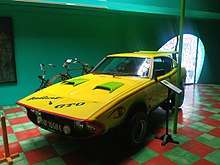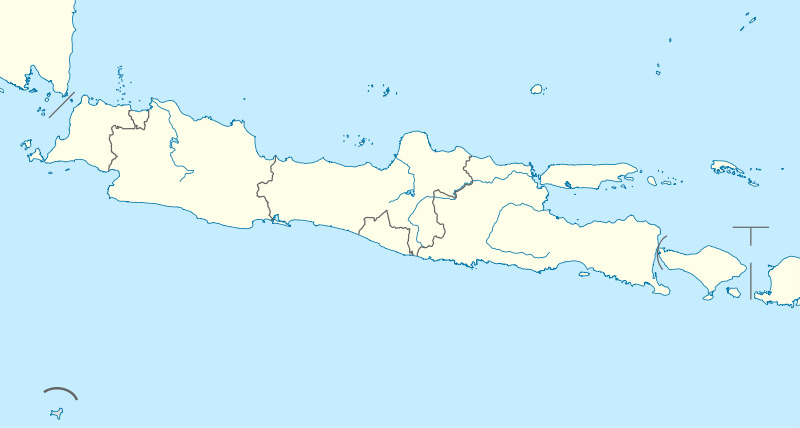Affandi Museum
The Affandi Museum is a museum located in Yogyakarta on Java, Indonesia.
 Affandi's car and bike on display at his museum | |
 Location in Java | |
| Location | Depok, Sleman Regency, Yogyakarta, Indonesia |
|---|---|
| Coordinates | 7.7827°S 110.3963°E |
| Type | Art museum |
| Visitors | 17,919 (2010)[1] |
| Website | www |
On the bank of the Gajah Wong River on Solo Street, the painter Affandi designed and constructed a home for himself, which also functions as a museum to display his paintings. The building is uniquely constructed, with a roof that resembles a banana leaf. The museum has around 250 of Affandi's paintings. The high air humidity and temperature are causing concerns about the condition of the paintings. The Affandi Foundation, which manages the museum, finds it difficult to manage the museum properly, due to a lack of funds and revenue.[2]
Before dying, Affandi spent a lot of time sitting around in his own museum, observing his paintings. He said once, “I want to die in simplicity without giving anyone unnecessary trouble, so I could go home to Him in peace.”
After suffering a complication of illnesses, on Wednesday, the May 23, 1990, Affandi died. He is now buried in the museum complex, as he wished to always be surrounded by his family and his works.
Activities
The museum's activities studio, Gajah Wong Studio, holds painting classes for kids and adults.[3] There are also workshops and painting demonstrations.
Artworks
Several Affandi paintings are permanently exhibited in the Affandi Museum:[4]
- Self-portrait, 1938
- Affandi and Kartika (Potret met dochter), 1939
- Nude (My Wife Maryati), 1940
- Kartika Painted Her Father, 1944
- Kids Play With Worm, 1943
- He Comes, Waits and Goes, 1944
- Line Up For Rice in Jakarta, 1948
- The Painter and His Daughter, 1950
- Place de Tertre, 1977
- Self Portrait of Sipping Pipe, 1977
- Embryo, 1988
Alongside this, Affandi also collected paintings from various painter colleagues, such as the works of Sindu Sudjojono, Basuki Abdullah, Amrus Natalsya (sculptures), Barli, Popo Iskandar, Hendra Gunawan and Batara Lubis.[5]
References
- "Numbers of visitor". Affandi Museum. Retrieved April 6, 2018.
- Lenzi, Iola (2004). Museums of Southeast Asia. Singapore: Archipelago Press. p. 200 pages. ISBN 981-4068-96-9.
- "Gajah Wong Studio". Retrieved April 6, 2018.
- "Affandi's Paintings". Retrieved April 6, 2018.
- "Friends". Retrieved April 6, 2018.